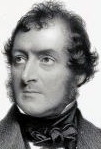 |  |
 |  |


Taunton Report (1868) 1868 Taunton Report (Vol. I) (text) Appendices I-VIII (pdf) |
Taunton Report (1868) Report of the Schools Inquiry Commission Volume I London: HM Stationery Office Background notes Historical context The Schools Inquiry Commission was the last of three Commissions appointed by the government between 1858 and 1864 to examine education in England and Wales and to make recommendations. Each dealt with the education of a particular social class:
 The Schools Inquiry Commission was chaired by Lord Taunton (1798-1869) (pictured, from the painting by Charles Baugniet), a prominent Whig/Liberal politician of the mid-nineteenth century. It is therefore sometimes referred to as the Taunton Commission and its report as the Taunton Report. The Schools Inquiry Commission was chaired by Lord Taunton (1798-1869) (pictured, from the painting by Charles Baugniet), a prominent Whig/Liberal politician of the mid-nineteenth century. It is therefore sometimes referred to as the Taunton Commission and its report as the Taunton Report.
The Commission published twenty volumes (of which Volume I is presented here): I Report of the Commissioners with Appendix of Tables etcA map of England was also published in a separate folio volume. The Report's recommendations The Commission's recommendations are listed in Chapter VII (pages 571-661). The Commissioners recommended the establishment of a national system of secondary education based on the existing endowed schools. Their report clearly illustrated the accepted class divisions in English society at the time. It envisaged three grades of secondary education in separate schools:
The Commissioners argued that no curriculum could be complete without natural science, and they recommended that a start should be made with the outlines of physical geography, which 'requires no apparatus but good maps' (page 35). The Commissioners were also profoundly concerned about the provision of education for girls - there were only thirteen girls' secondary schools in the whole of England - and they dealt with the matter in Chapter VI (pages 546-570). They were not impressed by what they found: 'It cannot be denied that the picture brought before us of the state of Middle Class Female Education is, on the whole, unfavourable' (page 548). Want of thoroughness and foundation; want of system; slovenliness and showy superficiality; inattention to rudiments; undue time given to accomplishments, and those not taught intelligently or in any scientific manner; want of organisation - these may sufficiently indicate the character of the complaints we have received, in their most general aspect (pages 548-9). The report online Volume I is presented here in two parts: the Preliminary pages and the Report itself are presented in a single web page; the Appendices in a pdf file. In the Report itself, I have corrected a handful of typing errors and simplified some of the punctuation. I have not, however, attempted to remove the many unnecessary commas. Anything I have added by way of explanation is shown [in square brackets]. Where sums of money are mentioned I have replaced the archaic l with £. In some cases, guineas are referred to: a guinea was worth 21s (£1.05).
|